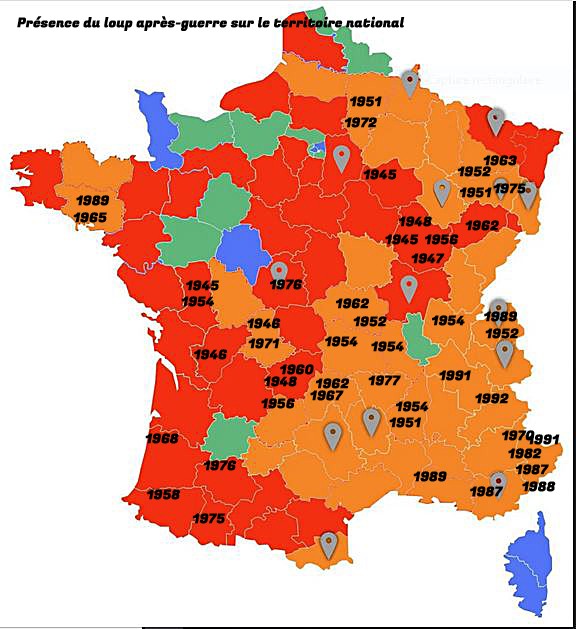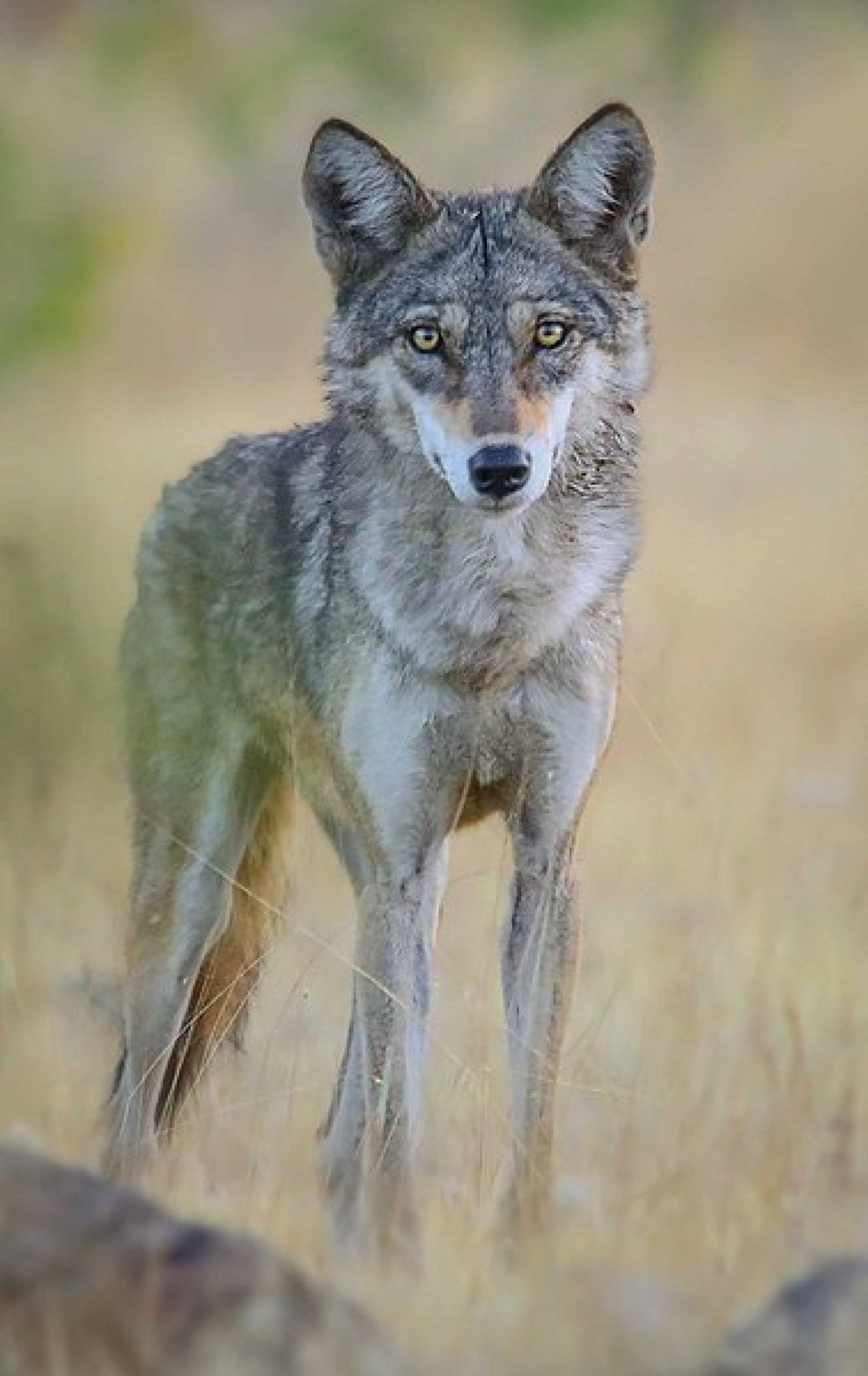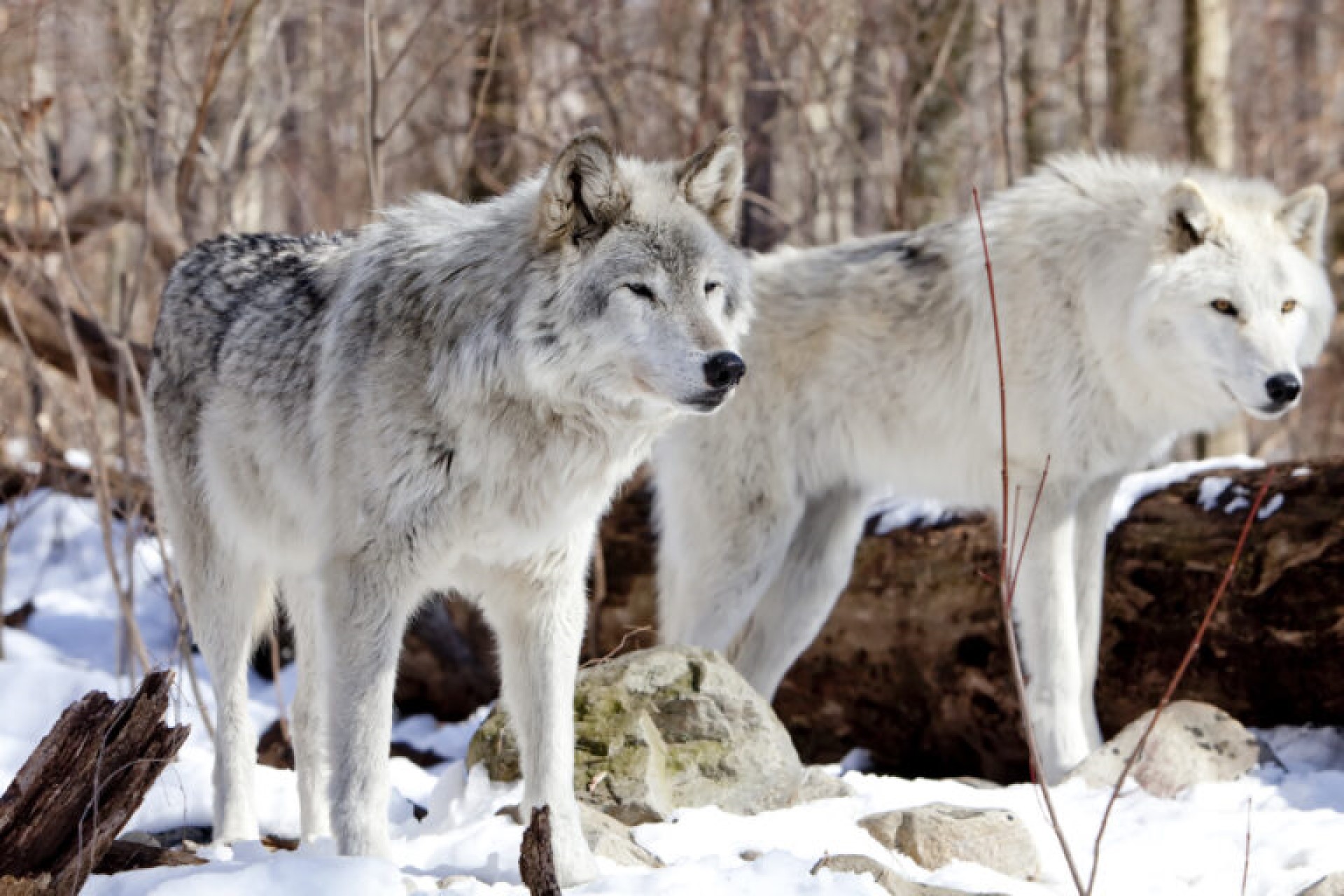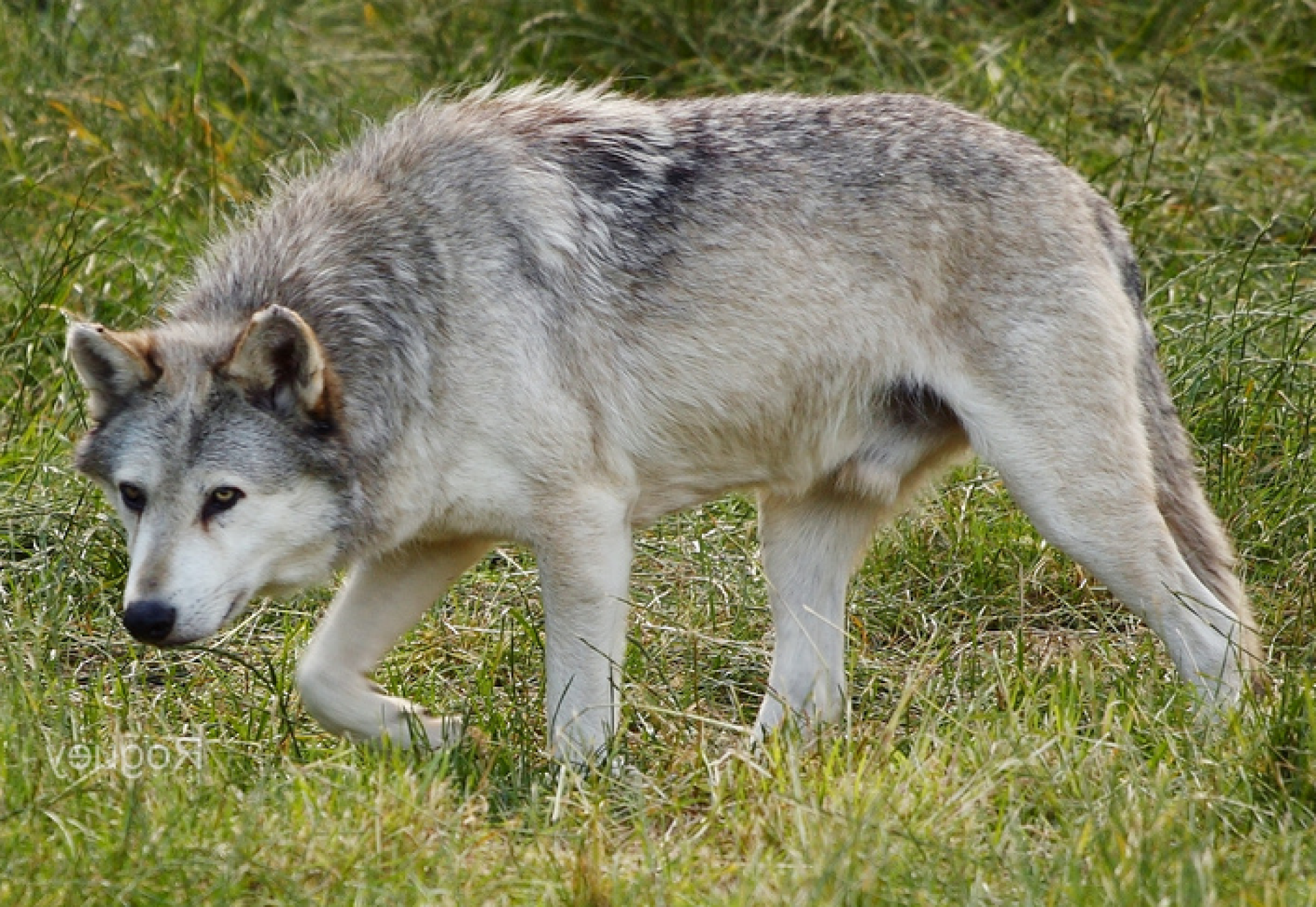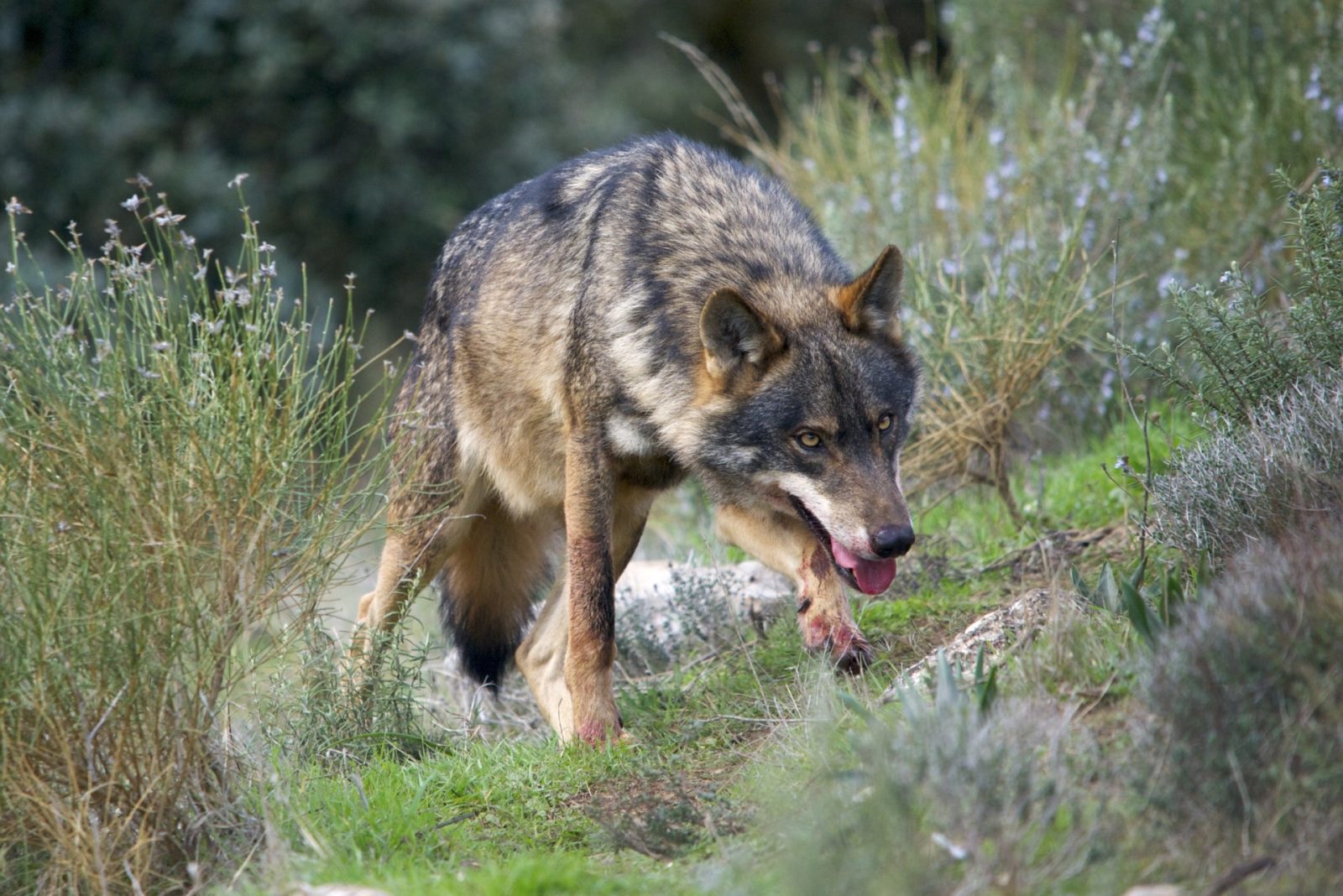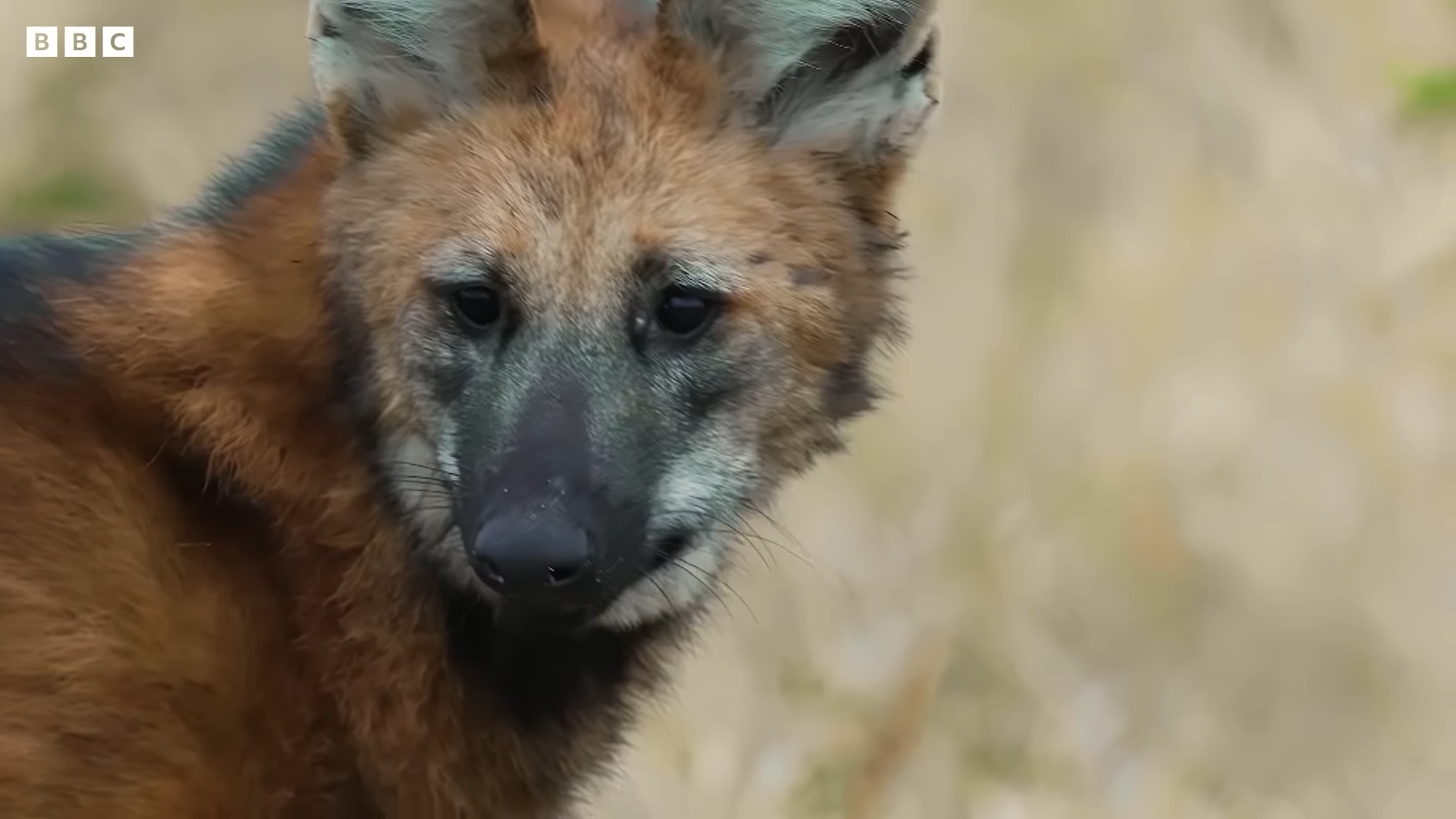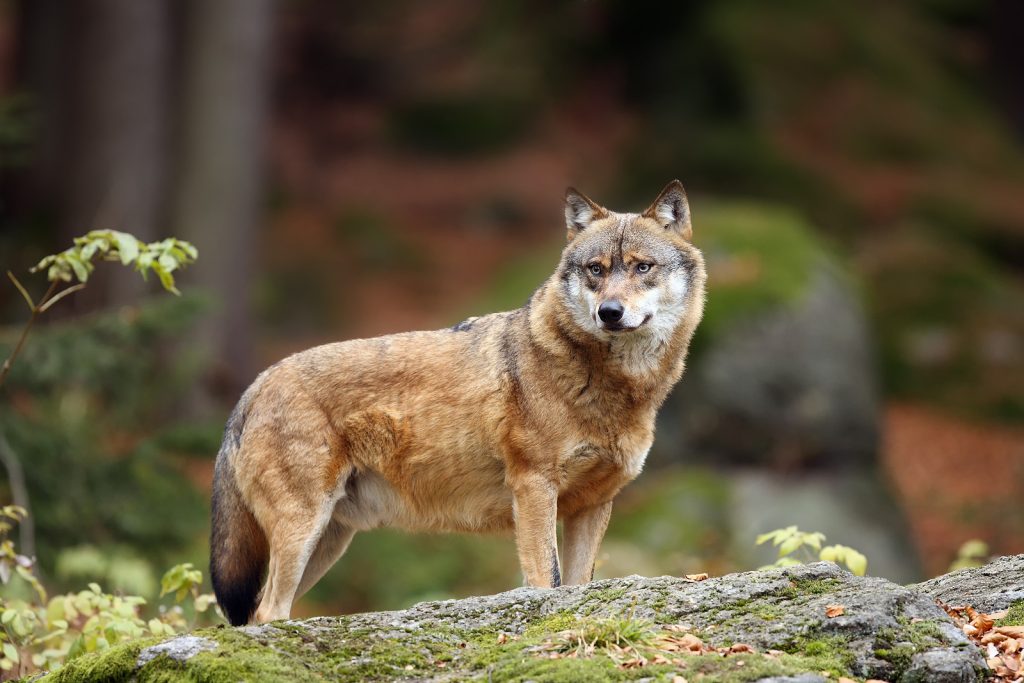
Wolves still exist in large numbers in Eastern Europe, and are even doing alright in central Europe (this wolf was photographed in Slovakia).
Back in the 1960s, while small populations survived in Western Europe, the wolf had been exterminated from the majority of their former habitat. There was a remnant population of around 500 in the Northwest of the Iberian peninsular (Spain/Portugal) an Italian population of perhaps just 100 in the early 1970s. While the last Scandinavian wolf was shot in the early 1970s they returned in 1977. Although there has been an unpleasant atmosphere for wolves in scandinavia for a very long time, there is a very healthy population in western Russia, as the whole of Russia is thought to have around 300,000 wolves.
So, with all that said, is it time for wolf hunting to return? The suggestion is that, by allowing hunters to kill wolves, culling would not be required, and this would control the population better. It should be noted, that the same attitude in the USA did not work, as the population was eradicated from various areas all together.
Some of this conversation has been prompted by incidence such as the mauling of Ursula von der Leyen’s pet pony. While this is sad, is it actually a sign of how things are working? or is it bad luck?

Even in hunting areas, generally the take number is not normally above 10%, and given that the wolf is still a recovering population, it should be recognized that hunting quotas, should likely be below 5%.
So we will look at each population in turn. To see my analysis scroll down to below the overview of each European population.
- Iberian wolf: current population is around 2500. Data shows that between 2008 and 2014 944 wolves were killed, with 333 of these illegally. This works out at around 10% a year, though without the illegal killing, this number would have been just over 600- not far above 5%. However, it should also be noted that wolf watching is highly popular, with the are around the Sierra de Culebra bringing in just short of €1,000,000. Legal hunting has now been banned, though it is a sensible move to remove it, as ecotourism has always given more money. Illegal wolf killing is harder to know, though much is as a result of predation of livestock. There are increasing numbers of livestock farmers who happily coexist with the wolves – eco-tourism and the money that this can bring in, will certainly make this easier. I have had brief glimpses of wolves from this population, as well as hearing a few wolf packs howling.
- Andalucian wolf (Southern Iberian wolf population) thought to number around 50-60 back in 2010, the Andalucian wolf was officially declared extinct in 2023. While there may be a few left, there are probably not enough to recover on their own. Wolf populations in the North-west are no longer hunted, which will hopefully lead to these wolves spreading slowly around other suitable parts of the country.
- Pyrenees wolf and the French alps: The Pyrenees population is small, thought to consist of around 16 wolves, while the total number of wolves in France was estimated 2022/2023 at 1104 in 128 packs (as well as a few pairs). This is a dramatic increase in 30 years, from the 2 that crossed from Italy back in 1992. They certainly have not had everything their own way, with culls keeping this population from expanding too fast. Wolves are capable of travelling great distances when dispersing, and they have been seen in Normandy in recent years. There is much empty space in France, which means that there is much space for a wolf population, and with a boar population of around 2 million, as well as many red and roe deer, there is plenty of food – and keeping these herbivores moving, makes sure that road kill is kept to a minimum.
- Italian wolf: Wolves survived in Italy, through the whole of the 20th century, with their minimum of around 500 hit in around the 1970s. Since then, the population has rebounded to around 3300, and it is this population which is the origin of the French wolf. Known as the Apennine wolf (living along the Apennine mountain range, the population is relatively stable. While the illegal wolf hunting does continue (resulting in around 200 dead wolves a year) there is no legal hunting quota. There is a sizable wolf tourism market, though from personal experience, this does not exist everywhere that the wolf does.
- Dinirac/Balkans wolf: These wolves roam through areas, formerly controlled by Yugoslavia, in countries such as Croatia. This whole population is thought to number 3900, but there are few places where the wolf is easy to see. Having said this, there are places in Croatia, where you can expect at least 1 sighting a week (Croatia is thought to have around 200 of the wolves living within their border).
- Norway Sweden border: Norway has decided that its population, wild as it is, cannot cope with many wolves. Around 45 wolves live exclusively in Norway, with a further 45 holding territories which are split between Norway and Sweden. Sweden has roughly 450 wolves. In 2017, when Norway’s wolf population was estimated at 65, the government said that 47 could be recreationally hunted – that is roughly 75% and is clearly not sustainable. It should be noted, that in Norway, the Caribou are considered wild roaming domesticated animals, and as such, despite being there, it is considered predation if they are killed (at this time, there were 9 wolf packs, with the governments target of just 4-6). In Sweden, last year they set the target number of wolves to be hunted at 75 (twice the 2022 so-called “scientific” number) , though they only recorded 56 deaths – though you should note, that this is still above the 10%.
- Finally (other than Eastern Europe, covered below) there is a small population in North Eastern France, as well as 2 other small isolated populations in Germany (at roughly the same latitude). These were only settled in recent years, which brings hope that they will spread, and join with larger populations in the area.
- Eastern Europe, into Russia: This is perhaps the only wolf population in Europe, which might be able to stand significant hunting. The wolf population of eastern Europe, is considered at roughly 10,000, though it is linked to the Russian wolf population which is perhaps a further 30,000. This population is not equally spread, with Romania holding 2500-3000, Poland 1900, Germany up to 2000, Slovakia around 500, and 2000 in Ukraine, and 2000 in Belarus. Lithuania has around 500, with Latvia having 700-800 and Estonia 360 (I recognize that this is over 10,000, which is not surprising, as it is common knowledge that wolf populations are usually overestimated, as this allows bigger culls). Protections in these countries vary, with some countries having laws and others none at all. The population here is generally stable, but tourism money would help sustain this population
So, do I agree with Ursula von der Leyen? No!
Apart from anything, looking at the map of where wolves are found, Northwest Germany is not an area which wolves have yet settled in, so this attack was likely from a roaming wolf. I have every sympathy with her loss, and these roaming wolves are certainly the hardest to deal with. They are usually young, having left their birth packs in recent times, and as such are less adept at hunting, and more likely to go for the easy kill. As their experience grows, they tend to take less and less livestock (provided the wild populations are not overly depleted by humans).
It is definitely a complicated task for livestock owners to live alongside wild carnivores. Unfortunately, that is the reality. Having said this, it needn’t be a negative. Guard dogs, electric fences and a variety of other methods, can reduce predation to negligible levels (though admittedly, doing nothing can cause problems). Whether to help with the cost of these measures to protect livestock, or as an extra, there are also large numbers of people in Europe, who would love to catch a glimpse of a wolf in the wild.
If you live in a place where wolves roam regularly, do get in touch (click on “list your wild place” and fill in the form under “in the shadow of mankind”, we would love to link you with people who might like to see wolves in the wild. We are keen to help the world reach a point where wild animals on your land may complicate your world, but they also increase your earning potential.

